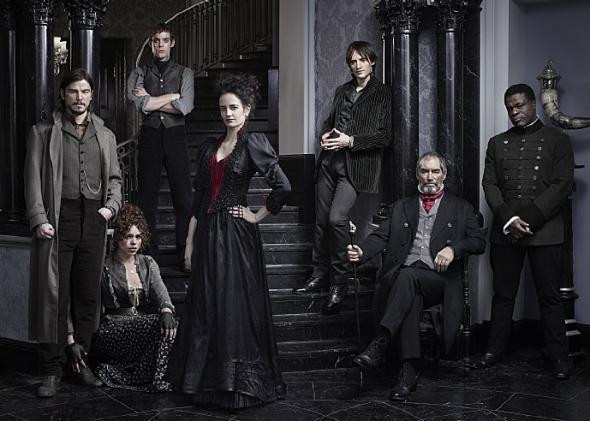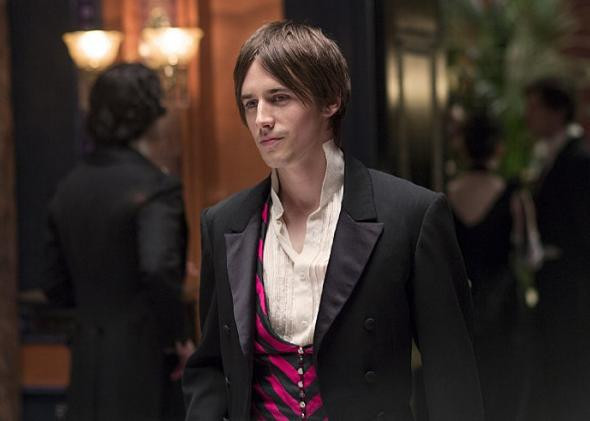John Logan, the creative force behind the chilling Showtime series Penny Dreadful, is no stranger to crafting compelling narratives. Before bringing his unique vision to television, Logan had already established himself as a prominent figure in both theater and film. His accolades include a Tony Award win in 2010 for his play Red, and screenplay credits for blockbuster movies such as Gladiator, The Aviator, Hugo, and the James Bond hit Skyfall. This impressive background solidified his reputation for dramatic storytelling and character development, making him a perfect fit for the dark and intricate world of Penny Dreadful.
In Penny Dreadful, Logan masterfully weaves together iconic figures from Gothic literature. Victor Frankenstein, Dorian Gray, and creatures reminiscent of Dracula inhabit Victorian London, sharing the gaslit streets with original characters. Among these are Ethan Chandler (portrayed by Josh Hartnett), an American sharpshooter with a mysterious past; the intrepid explorer Sir Malcolm Murray (played by Timothy Dalton); and the enigmatic Vanessa Ives, brought to life by Eva Green. This ensemble cast navigates a world where the supernatural lurks beneath the veneer of Victorian society, exploring themes of darkness, identity, and the monstrous within.
In a revealing interview, John Logan delves into the personal inspirations behind his fascination with monsters and the creation of Penny Dreadful. He discusses how his experiences as a gay man shaped his perspective on outcasts and the monstrous, his reasons for choosing established literary characters, and the surprising tenderness he imbued in Frankenstein’s creature.
The Personal Monsters of John Logan
June Thomas: You’ve mentioned that your identity as a gay man played a role in your interest in monsters and this show. Could you elaborate on that connection?
John Logan: Monsters have always captivated me. It’s a common childhood fascination, often explained by a simple love for the scary or exciting. However, as I matured, I recognized a deeper resonance, a kinship rooted in my experience growing up as a gay man. During my junior high and high school years in New Jersey in the mid-1970s, I was immersed in theater and frequently visited New York City. Greenwich Village and Christopher Street, at that time, were very different places – alluring, yet also intimidating and somewhat forbidden. Observing the world around me, I felt a sense of belonging there. Stepping into that world, however, meant acknowledging a difference from my brother, my family, and my school friends. It was daunting, but my journey of coming out became intertwined with accepting that what some might perceive as alien, different, or even monstrous about me, was also a source of empowerment. It instilled in me a sense of self-assurance, uniqueness, and a drive towards individuality that I believe is crucial for any writer.
 The main cast of Penny Dreadful, a horror TV series created by John Logan, featuring Josh Hartnett, Eva Green, Timothy Dalton, and others.
The main cast of Penny Dreadful, a horror TV series created by John Logan, featuring Josh Hartnett, Eva Green, Timothy Dalton, and others.
Thomas: Penny Dreadful feels like a reimagining of the monster narrative, shifting the focus to the feelings of those who are marginalized rather than the mainstream perspective.
Logan: Absolutely, that’s precisely the intention. This applies not only to characters overtly supernatural or monstrous like Frankenstein’s creature or Dorian Gray but to all the characters. The dramatic core lies in how they confront their inner secrets, whether they reconcile with them or not. This struggle defines them. My own experience growing up mirrored this. Until I confronted and embraced my identity – something many might deem monstrous – I couldn’t fully become the artist or the person I am today.
Thomas: The scene where Dr. Frankenstein brings his creature to life is remarkably poignant. It’s intimate, filled with tears and tender gestures from both. This is a fresh perspective on that iconic moment, almost suggesting Victor has created a deeply intimate friend for himself.
Logan: Yes, he has created an intimate connection in a life largely devoid of friendship. He has also, in a way, experienced childbirth. The inspiration for that portrayal came from witnessing the birth of my niece. Being in the hospital and observing her mother holding her, the expression on her face was profoundly moving. When writing that scene, I realized that’s the essence of it – the complex, heartbreaking emotion of giving birth, the poignancy of new beginnings intertwined with the irreversible changes that follow.
Thomas: In the second episode, Dorian Gray engages in a sexual encounter with a woman suffering from consumption, and her physical sickness, particularly her tainted blood, seems to arouse him.
Logan: Oscar Wilde’s creation was an eternally youthful man who has experienced everything and become jaded. In our interpretation, Dorian Gray is in constant pursuit of novel experiences. He sees an opportunity for something entirely new: “I can make love to a dying human being, something I’ve never done before.” This novelty becomes a source of arousal for him.
 Reeve Carney portraying Dorian Gray in Penny Dreadful, a character explored in depth by writer John Logan.
Reeve Carney portraying Dorian Gray in Penny Dreadful, a character explored in depth by writer John Logan.
Thomas: To me, there seemed to be a parallel to the AIDS crisis. We occasionally hear about “bug chasers,” individuals who intentionally seek HIV infection. Was that in your thinking?
Logan: Not directly, but the potent symbolism of fresh blood in relation to AIDS was certainly in my subconscious. I am old enough to remember when HIV and AIDS emerged and the widespread fear and misunderstanding that accompanied it. Questions like, “Can you kiss? Can you touch? What happens if you touch blood?” were prevalent. In the dynamic between Dorian and Brona in that scene, there is a subtextual, or perhaps metatheatrical, awareness of the power of blood, infection, and illness.
Thomas: I find the character of Sir Ferdinand Lyle fascinating. He embodies some classic tropes of a closeted gay character – the dandyish affectations, the slightly lisping speech, the elaborate hairstyle, his familiarity with codes and occult languages. However, I doubt a consciously gay writer like yourself would create such a stereotypical character without a deeper purpose. Can you decode Lyle for me?
Logan: Ferdinand Lyle is indeed a fop, a joyful one. But he is also a highly respected linguist and Egyptologist. As the series progresses, you witness the depth and vulnerability of this character emerge. London in 1891 was not an era where gay men were celebrated for flamboyant displays – as Oscar Wilde himself would attest. Lyle is, in part, my exploration of the complex sexual mores of the Victorian period.
Thomas: You seem drawn to shadows. Vanessa Ives speaks of exploring the demimonde between the known and the feared. Is that liminal space a central interest for you as a writer?
Logan: It is the primary space that captivates me as a dramatist. I don’t believe in simplistic heroes or villains. When writing a character like Silva in Skyfall, for example, it would have been easy to portray him as a stereotypical villain. But the real challenge, and the true provocation, lies in uncovering the poignancy and pain that underlies the villainy. As any playwright will tell you, the most compelling characters are the most complex ones, those who dwell in the shadows and grapple with their inner demons.
This interview has been edited and condensed.
